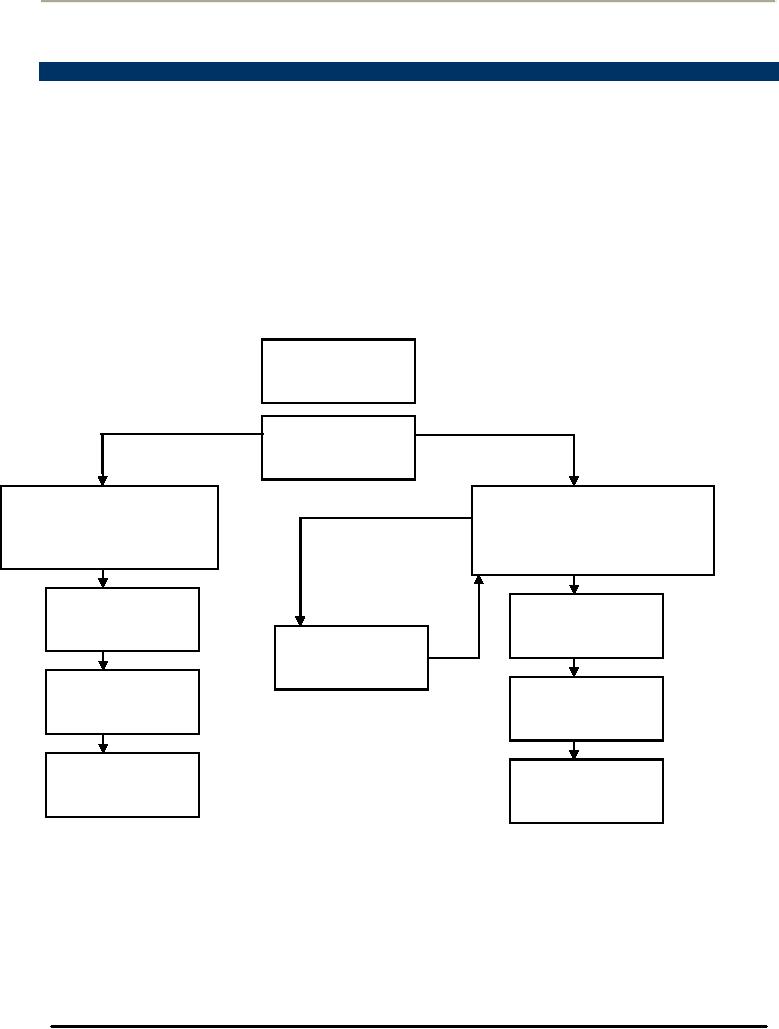 |

Consumer
Psychology (PSY -
514)
VU
Lesson
06
CONSUMER
RESEARCH
(CONSUMER
RESEARCH PARADIGMS)
OBJECTIVES:
Understanding
the following paradigms of Consumer
Research
Qualitative
Research
Quantitative
Research
Combining
Qualitative and Quantitative
Research
Research
Objectives
1.
CONSUMER RESEARCH
PARADIGMS
Owing
to the earlier business paradigms
consumer researchers thought of
consumers as logical Individuals who
act
rationally
to maximize their benefits. They
thought consumers purchase the
most beneficial product at the
lowest
possible
cost and the consumers
purchase decision is a calculated
one.
Eventually
the researchers realized that
consumers were not always
consciously aware of why they
made the
decision
they did. Even when they
were aware of the reasons, they
were not willing to
reveal.
In
1939, a Viennese Psychologist
Ernest Dichter began to use
Freudian Psychoanalytic techniques to uncover
the
hidden
motives of consumers. Psychoanalysis is a
dynamic theory of personality that
states that human
behavior
springs
from unconscious drives and
wishes.
By
late 1950's most consumer
researchers adopted Ernest Dichter's
technique, which was called
"Motivational
Research"
essentially a qualitative
approach.
As
a result of Dichter's work and
subsequent research designed to
search deep within the
consumer's psyche,
consumer
researchers today use two
different types of research
methodology to study consumer
behavior:
Quantative
Research and,
Qualitative
Research
1.
Quantitative Research
Quantitative
research is descriptive in nature
and is used to understand
effects of various promotional
inputs on
the
consumers, thus enabling researchers to
predict consumer behavior. The
research approach is known
as
Positivism.
The
research methods used in
Quantitative research consist of
observation, survey techniques
and
experiments.
Researchers primarily concerned
with predicting consumer
behavior are called Positivists
2.
Qualitative Research
Tends
to be qualitative in nature. It is based
upon data gathered from
small sample. It views each
consumption
situation
unique and non-predictable. The main
emphasis of qualitative research
upon understanding consumer
experiences
has led to the term Interpretivism.
Researchers who adopt this
paradigm are called Interpretivists.
They
seek to find common patterns of operative
values, meanings and
behavior across consumption
situations.
The
methods included in qualitative research
are:
Depth
Interviews
Focus
Groups
Projective
Techniques
Metaphor
Analysis
Combining
Qualitative and Quantitative Research
Marketers
often use a combination of
qualitative and quantitative
research. To discover new
ideas and develop
promotional
strategy qualitative research
findings are used. To predict
Consumer reactions to various
promotional
19

Consumer
Psychology (PSY -
514)
VU
inputs
ideas stemming from
qualitative are tested empirically to
become the basis for the
design of quantitative
research
2.
CONSUMER RESEARCH PROCESS
Major
Steps in Consumer Research
Process
The
major steps in consumer research
process include:
1.
Defining
the Objectives of Research
2.
Collecting
and Evaluating Secondary
Data
3.
Designing
a Primary Research
Study
4.
Collecting
Primary Data
5.
Analyzing
Data
6.
Preparing
Report on Findings
Model
of Consumer Research
Process
The
following figure shows a model
researchers use for guiding
them in their researches:
Develop
Objectives
Collect
Secondary Data
Design
Quantitative Research
Design
Qualitative Research
Method
Method
Screener
Questionnaire
Sample
Design
Discussion
Guide
Data
Collection Instruments
Conduct
Research
Collect
Primary Data
(Using
highly trained
(field
staff)
interviewers
Exploratory
Study
Analyze
Data
Analyze
Data
Prepare
Report
Prepare
Report
20
Table of Contents:
- INTRODUCTION TO CONSUMER PSYCHOLOGY:Consumer Behavior
- INTRODUCTION TO CONSUMER PSYCHOLOGY:Consumer research
- INTRODUCTION TO CONSUMER PSYCHOLOGY:Marketing Mix, Product, Price
- INTRODUCTION TO CONSUMER PSYCHOLOGY:Customer Value, Perceived Value
- VALUE AND RETENTION FOCUSED MARKETING AND CONSUMER DECISION MAKING PROCESS
- CONSUMER RESEARCH:Quantitative Research, Qualitative Research
- MAJOR STEPS IN CONSUMER RESEARCH PROCESS:Design of Primary research
- QUANTITATIVE RESEARCH DESIGNS & DATA COLLECTION METHODS
- QUANTITATIVE RESEARCH DATA COLLECTION TECHNIQUES:ATTITUDE SCALES
- QUALITATIVE RESEARCH DESIGNS & DATA COLLECTION METHODS
- CUSTOMER SATISFACTION MEASUREMENT, SAMPLING, AND DATA ANALYSIS AND REPORTING
- MARKET SEGMENTATION AND ITS BASES:Geographical Segmentation
- BASES FOR SEGMENTATION: DEMOGRAPHIC SEGMENTATION PSYCHOGRAPHIC SEGMENTATION
- BASES FOR SEGMENTATION: SOCIOCULTURAL SEGMENTATION USE RELATED SEGMENTATION USAGE SITUATION SEGMENTATION
- BASES FOR SEGMENTATION: BENEFIT SEGMENTATION:Intrinsic Cues
- BASES FOR SEGMENTATION: HYBRID SEGMENTATION STRATEGIES
- MARKET SEGMENTATION IMPLEMENTING SEGMENTATION STRATEGIES ENVIRONMENTAL INFLUENCES CULTURE
- HOW CULTURE IS LEARNT ENVIRONMENTAL INFLUENCES:Formal Learning
- CULTURE AND ITS MEASUREMENT ENVIRONMENTAL INFLUENCES
- MEASUREMENT OF CULTURE ENVIRONMENTAL INFLUENCES:Consumer Fieldwork
- SUBCULTURE CHAPTER 4: ENVIRONMENTAL INFLUENCES
- AGE AND GENDER SUBCULTURE CHAPTER 4: ENVIRONMENTAL INFLUENCES
- BASES FOR SEGMENTATION: BENEFIT SEGMENTATION:Market Segmentation
- SOCIAL CLASS CHAPTER 4: ENVIRONMENTAL INFLUENCES:Occupation
- CONSUMER SOCIAL CLASSES CHAPTER 4: ENVIRONMENTAL INFLUENCES:Affluent Consumer
- CONSUMER SOCIAL CLASSES CHAPTER 4: ENVIRONMENTAL INFLUENCES:Membership Group
- CONSUMER SOCIAL CLASSES CHAPTER 4: ENVIRONMENTAL INFLUENCES:Shopping Groups
- UNDERSTANDING PERSONALITY CHAPTER 5: INDIVIDUAL DETERMINANTS OF CONSUMER BEHAVIOR
- CONSUMER PERSONALITY, TRAIT THEORY AND SELF IMAGES
- CONSUMER MOTIVATION:Needs, Goals, Generic Goals
- UNDERSTANDING LEARNING:Intentional and Incidental Learning, Implications for Marketers
- INSTRUMENTAL CONDITIONING, INFORMATION PROCESSING AND MEMORY
- ATTITUDES:Characteristics of Attitudes, Attitudes have consistency
- ATTITUDE FORMATION AND CHANGE:How attitudes are learned?
- ATTITUDE CHANGE STRATEGIES:Resolving two conflicting attitudes
- INTRODUCTION TO CONSUMER DECISION MAKING:Decision Complexity
- Problem Recognition, Search and Evaluation and Decision and Purchase
- Decision and Purchase:Consumer Decision Rules, Output, Relationship Marketing
- Decisions Related to Post Purchase:Product Set up and Use
- Marketing Implications of Decisions Related to Post Purchase:Understanding
- Post Purchase Evaluation:Determinants of Satisfaction, Consumer Complaint Behavior
- Post Purchase Dissonance:Dissonance Reduction, Marketing Implications
- Consumerism:Roots of Consumerism, The Nature of Consumerism
- Consumerism – Issues and Responses:Environmental Concerns, Consumer Privacy
- Review – Consumer Psychology Course:Consumer Research, Consumerism